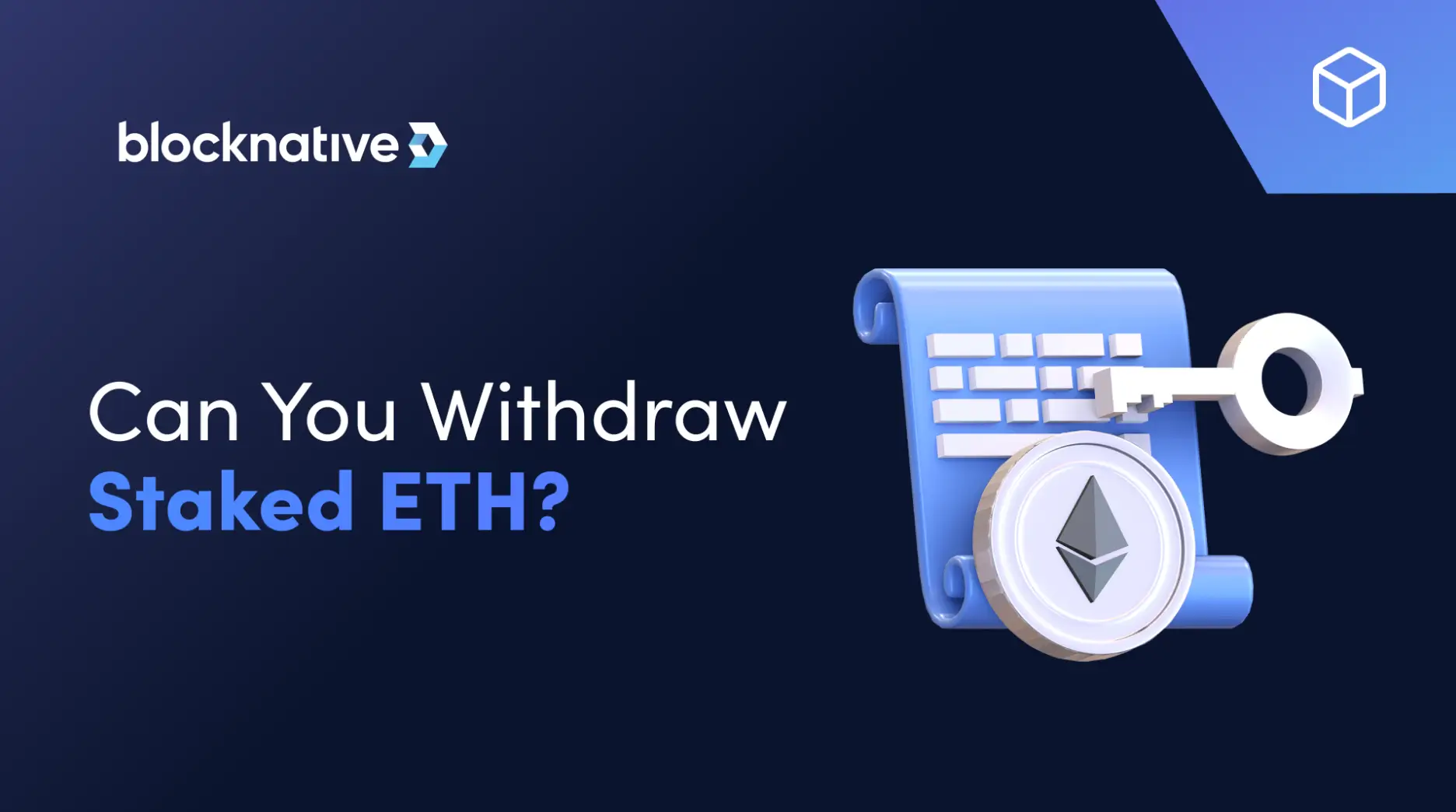Now that The Merge is complete, the Ethereum community is turning its attention to the next big upgrade, Shanghai. This network upgrade has taken over a year of planning and will add the finishing touch to Ethereum’s Proof-of-Stake system: EIP-4895 (staking withdrawals).
To date, users have locked over 16 million ETH to support Proof-of-Stake consensus (for a full guide to how staking secures the network, we recommend our guide to Ethereum validators). This stake has accumulated since the launch of the PoS Beacon Chain in December 2020.
Below, we’ll cover everything you need to know about the current status of staked ETH and when you can expect Shanghai to enable mainnet withdrawals.
The Status of Staked ETH Withdrawals
Currently, users can only deposit ETH to staking contracts – not withdraw. However, the upcoming Shanghai upgrade will most certainly enable users to withdraw staked ETH via the inclusion of EIP-4895. This upgrade is scheduled to take place on April 12, 2023.
"The Shanghai upgrade is planned to follow The Merge, which will enable the ability for stakers to withdraw," Ethereum.org states in a section entitled "The Merge and the Shanghai upgrade."
It’s important to note that the Ethereum development team takes an extremely disciplined and thorough approach to all EIPs. Testing is currently underway to ensure that mainnet withdrawals will cause no issues once launched:
Withdrawal-Mainnet-Shadow-Fork-1 is finalizing 🚀🚀🚀
— MariusVanDerWijden (@vdWijden) January 23, 2023
It started out with a few issues because the config wasn't correctly applied on geth (we disallow overriding the mainnet config). The config is applied correctly and all nodes are in agreement. We will start some evil nodes,.
It is critical to ensure that withdrawals and the ether accounting mechanisms they enable are fundamentally sound. ETH developer and EIP-4895 author Alex Stokes explained the importance of getting this right during a recent interview:
“If we had some withdrawal mechanism, and there was a faulty way to account for which ETH was moved where, then you could inflate the supply.”
With this in mind, there has been a wealth of research, discussion, and planning put toward enabling withdrawals.
On September 20, 2022, Alex Stokes tweeted that he had updated EIP-4895 in preparation for Shanghai deployment. On October 14, 2022, the Ethereum Foundation announced the launch of Shandong, an "early Pre-Shanghai testnet" set to activate six EIPs for early client testing. This list included EIP-4895 along with:
- EIP-3540 - EVM object format
- EIP-3651 - warm COINBASE
- EIP-3855 - PUSH0 instruction
- EIP-3860 - limit and meter initcode
- EIP-3670 - EOF- code validation
On November 3rd, 2022, an Ethereum Consensus Layer Call highlighted the importance of unlocking staked ETH. Discussions focused on the nuances of combining partial and full withdrawals into separate or combined queues, as well as an overview of outstanding items related to the validator withdrawals meta-spec.
The list of technical implementations for Shanghai was finalized on the December 13th, 2022 AllCoreDevs call. This call confirmed that staking withdrawals would, indeed, be included in the Shanghai upgrade.
A full breakdown of the included EIPs for Shanghai can be found on GitHub along with a checklist outlining the remaining steps before launch. For further insight regarding the technical specifications of withdrawals, we recommend Ethereum.org’s FAQ page.
When Can You Withdraw Staked ETH?
The Shanghai upgrade that will unlock staked ETH is currently scheduled for implementation in April of 2023.
Those who have staked ETH will need to wait for the completion of Shanghai to withdraw funds. However, it’s important to note that it is also possible to stake ETH without losing access to liquidity.
Accessing the Value of Staked ETH
Users staking their ETH through certain staking providers (such as Coinbase, Rocketpool, Lido, etc.) may access the value of their ETH via wrapped tokens. The term “liquid staking” describes this process.
For example, Coinbase offers Coinbase Wrapped Staked ETH (cbETH), which allows users to access their staked ETH value through a wrapped token that can be moved on-chain, traded, and used within dapps and DeFi protocols. Similarly, Rocketpool offers Rocketpool ETH (rETH), a wrapped token that represents the value of staked ETH on their platform.
Lido stakers are issued Staked ETH (stETH), a wrapped token representing their staked ETH value, and can also earn rewards in the form of additional stETH tokens.
Before staking, users should understand that these tokens may experience some fluctuations in value and that the underlying protocols do not guarantee a 1-to-1 ETH peg. Generally, these coins run at a slight discount (~0.5%) in price compared to unstaked ETH.
Blocknative & Staking
Blocknative operates one of Ethereum’s main MEV relays to support the decentralization of block-building and proto-PBS. With 4 years of experience operating low-latency, highly reliable infrastructure for Ethereum, we optimize your profitability no matter what transactions are in the mempool.
If you operate an independent validator, you can add our relay to help promote relay diversity throughout the industry. If you are an Ethereum holder utilizing a staking service, we recommend reaching out to your provider and encouraging them to connect to a diverse set of relays.
For developers looking to learn more about our relay or help develop it, we recommend reviewing the project on GitHub. If you have questions, you can also join our Discord for live updates and support.
Observe Ethereum
Blocknative's proven & powerful enterprise-grade infrastructure makes it easy for builders and traders to work with mempool data.
Visit ethernow.xyz
.png)

